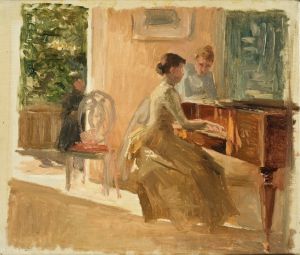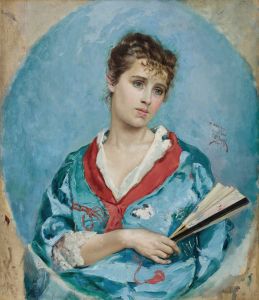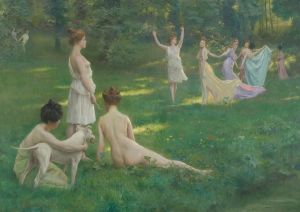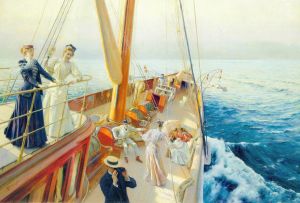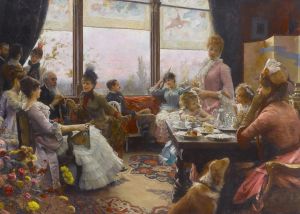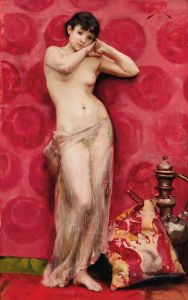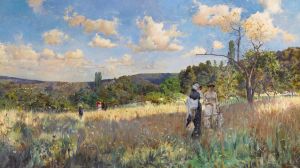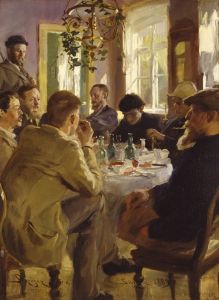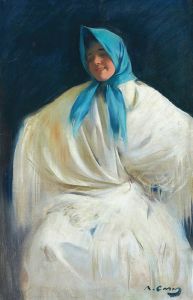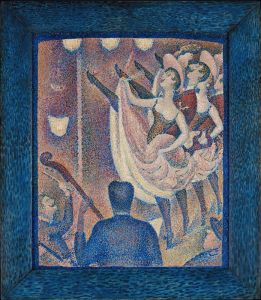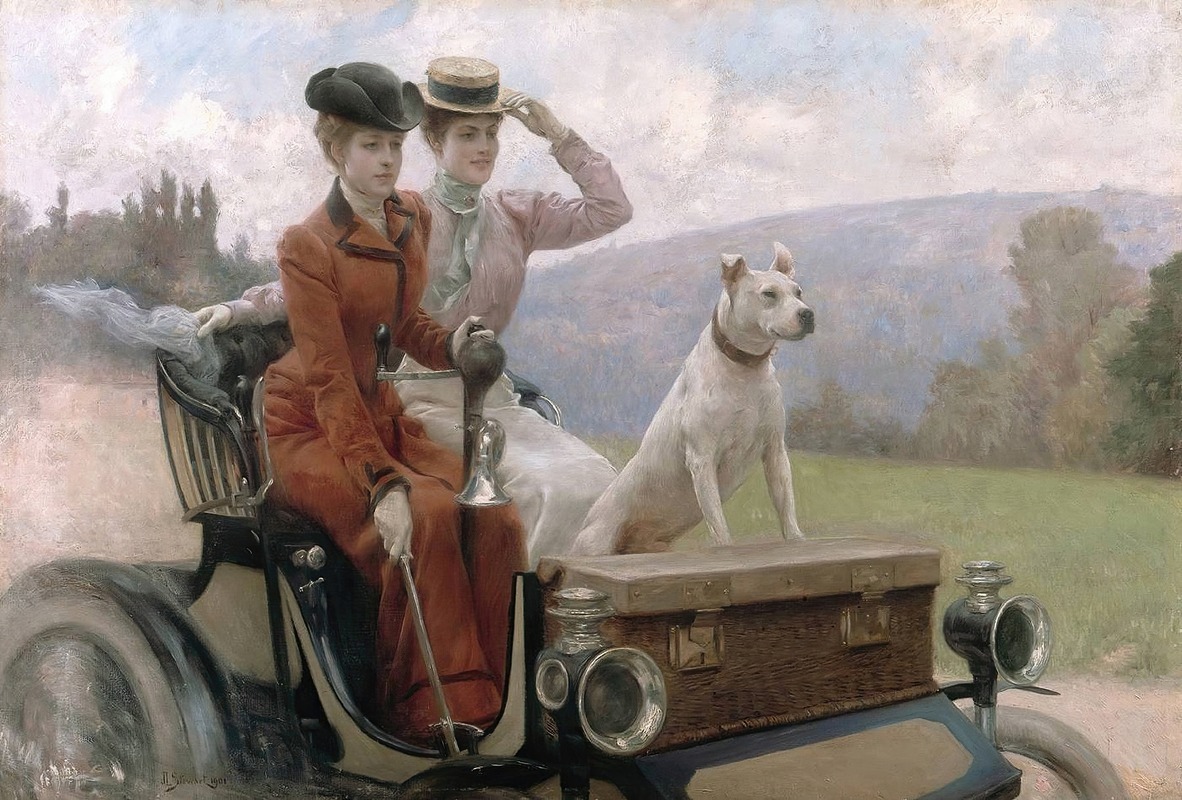
Les Dames Goldsmith
A hand-painted replica of Julius Leblanc Stewart’s masterpiece Les Dames Goldsmith, meticulously crafted by professional artists to capture the true essence of the original. Each piece is created with museum-quality canvas and rare mineral pigments, carefully painted by experienced artists with delicate brushstrokes and rich, layered colors to perfectly recreate the texture of the original artwork. Unlike machine-printed reproductions, this hand-painted version brings the painting to life, infused with the artist’s emotions and skill in every stroke. Whether for personal collection or home decoration, it instantly elevates the artistic atmosphere of any space.
Julius LeBlanc Stewart, an American artist known for his detailed and luxurious depictions of high society life during the late 19th and early 20th centuries, painted Les Dames Goldsmith in 1908. This artwork exemplifies Stewart's characteristic style, which often focused on the opulence and elegance of the social elite.
The painting portrays two women, identified as the Goldsmith sisters, seated in an interior setting. The composition emphasizes their refined demeanor and fashionable attire, reflecting the trends of the Edwardian era. Stewart's meticulous attention to detail is evident in the rendering of the fabrics, textures, and the overall atmosphere of sophistication. The artist's use of light and shadow enhances the depth and realism of the scene, a hallmark of his work.
Stewart was born in Philadelphia in 1855 and later moved to Paris, where he became associated with the cosmopolitan art circles of the time. He was influenced by the academic traditions of French painting and was a contemporary of artists such as John Singer Sargent. Stewart's works often catered to wealthy patrons and depicted scenes of leisure, luxury, and social gatherings, making him a prominent figure in the genre of society portraiture.
Les Dames Goldsmith is part of Stewart's broader oeuvre that captures the lifestyles of the privileged class during the Belle Époque. While the specific identities and biographies of the Goldsmith sisters are not widely documented, their portrayal in the painting suggests they were part of the affluent social milieu that Stewart frequently depicted.
The painting is notable for its technical skill and the way it encapsulates the cultural and aesthetic values of its time. It serves as a visual document of the fashion, decor, and social customs of the early 20th century. Today, Les Dames Goldsmith is recognized as an example of Stewart's ability to blend portraiture with genre painting, creating works that are both personal and representative of a broader societal context.
Further details about the current location or ownership of the painting are not readily available.






